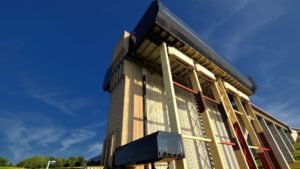
Europe's largest boat elevator at Strépy-Thieu.
You're immediately impressed by its size, and with good reason: this impressive concrete colossus rises 102 metres above the ground, and its upper section is the size of a soccer pitch! Coming from the E19-E42 freeway towards Mons, it rises like a huge black mushroom from the heights of Havré. On arrival, it's omnipresent: the Strépy-Thieu funicular elevator overlooks the Canal du Centre and the region.
.jpg)
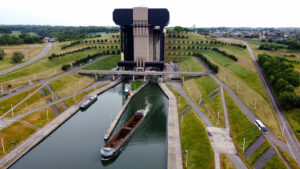
What is the purpose of a funicular elevator?
At the end of the Second World War, it seemed necessary to develop the Belgian waterway network in a uniform manner, and to carry out work on the Canal du Centre to increase its capacity to 1350 tonnes. At the time, the transport capacity of barges was limited to 300 tonnes. What's more, the 1957 European Conference of Ministers of Transport recommended adapting the canals to a loading capacity of 1350 tonnes. The Strépy-Thieu construction project is the latest phase in this program of works on the Belgian waterway network. It is of major strategic importance at European level, linking the Scheldt and Meuse basins, as well as the port and region of Dunkirk and the Rhine basin.

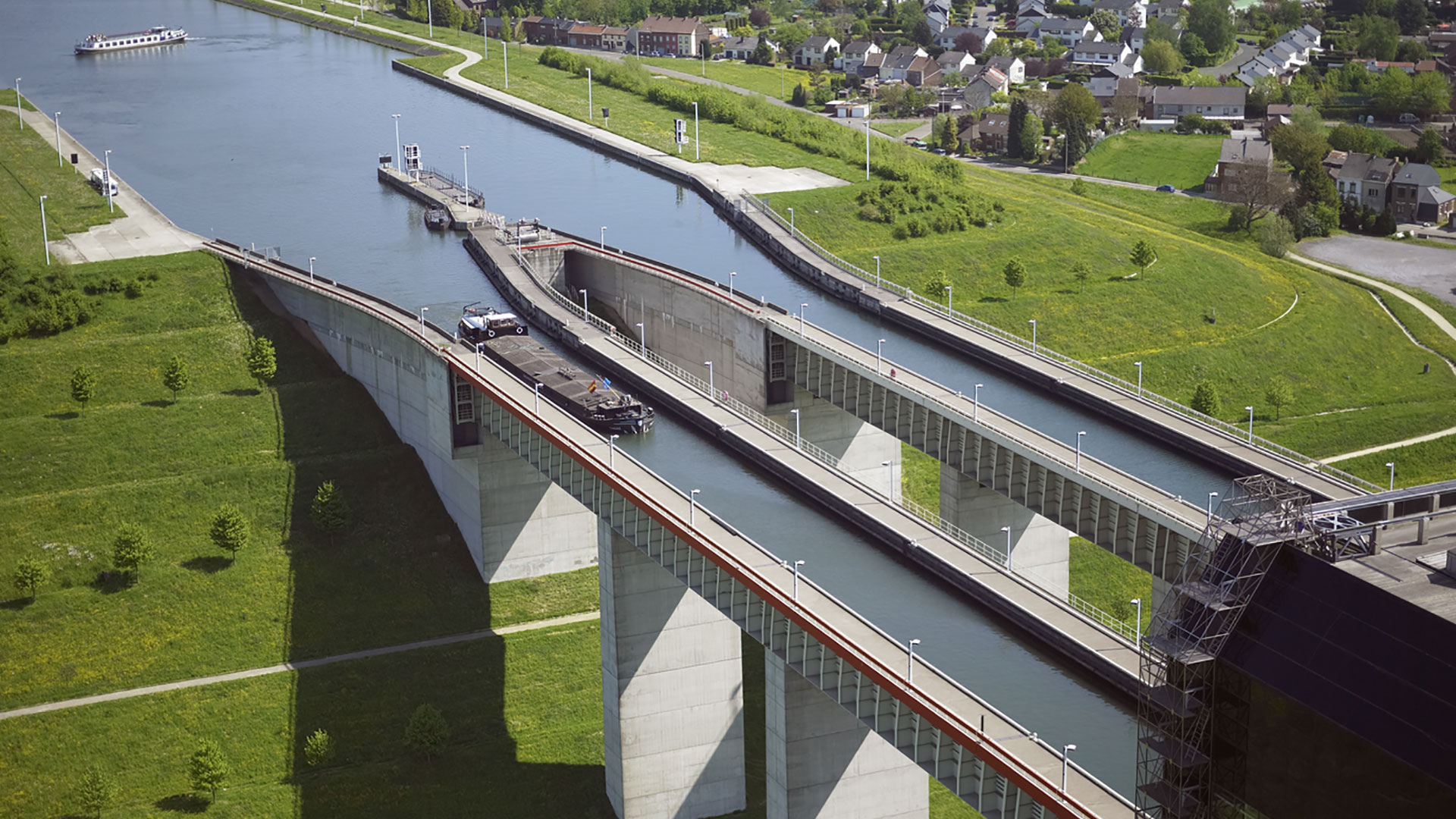
A river structure that bears witness to Belgian engineering spirit
At first glance, you're overwhelmed by its impressive appearance. But you have to step inside to reach the ticket office... and then climb inside to see the panoramic view and the "Waterways of Yesterday, Today and Tomorrow " interpretation center. The first sensation quickly gives way to admiration as you look outside or towards the heart of the elevator, with its steel cables, cogs and magnificent machinery. "Technology at man's service, simple, beautiful and efficient", we say to ourselves.

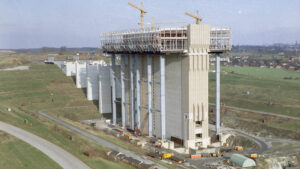
Construction of the funicular elevator
After several years of planning, construction of the Strépy-Thieu boat elevator, the only one of its kind in the world, began in February 1982. 20 years later, on August 30, 2002, the 12 km-long connection to the completely new and enlarged canal at the boundary between the communes of Le Roeulx (Thieu) and La Louvière (Strépy-Bracquegnies) was opened to river traffic.
The elevator is 102 m high and 135 m long. It can overcome a height difference of 73.15 m, replacing the four hydraulic elevators and two locks of the historic Canal du Centre. It meets the requirements of today's and tomorrow's commercial navigation.

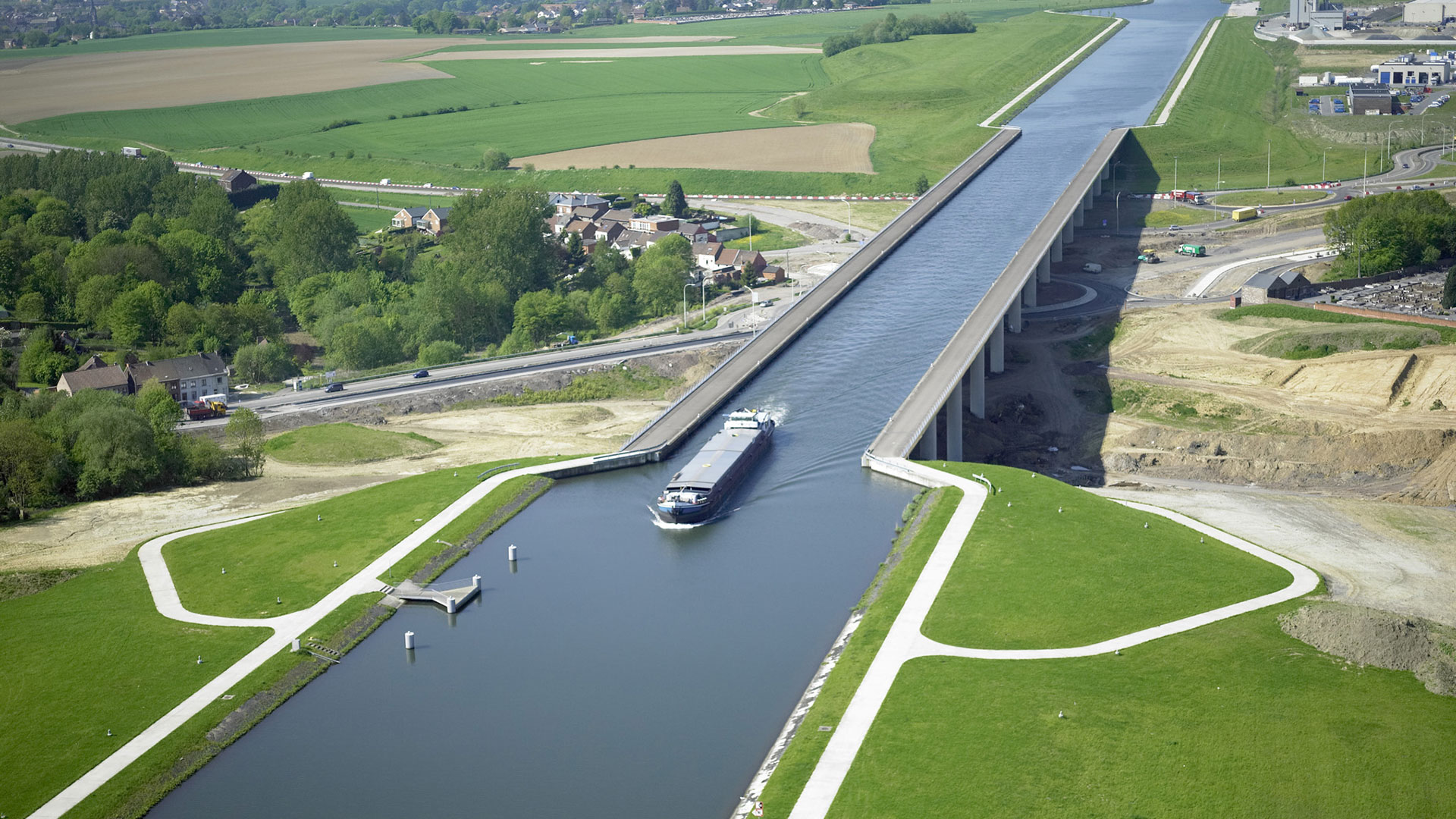
Sart au Rœulx canal bridge
The Sart canal bridge at Le Roeulx represents the final stage in the construction program. This 498 m-long structure, supported by 28 reinforced concrete piers, spans a road junction. It "welcomes" motorists as they enter La Louvière, without crushing them. The concrete aqueduct was built using the pushing method: no less than 65,000 tonnes of material were moved using powerful hydraulic jacks. The river link was completed on September 2, 2002, setting a new record (Award in the "Outstanding Construction" category of the International Federation of Concrete (FIB) in Osaka in 2003).

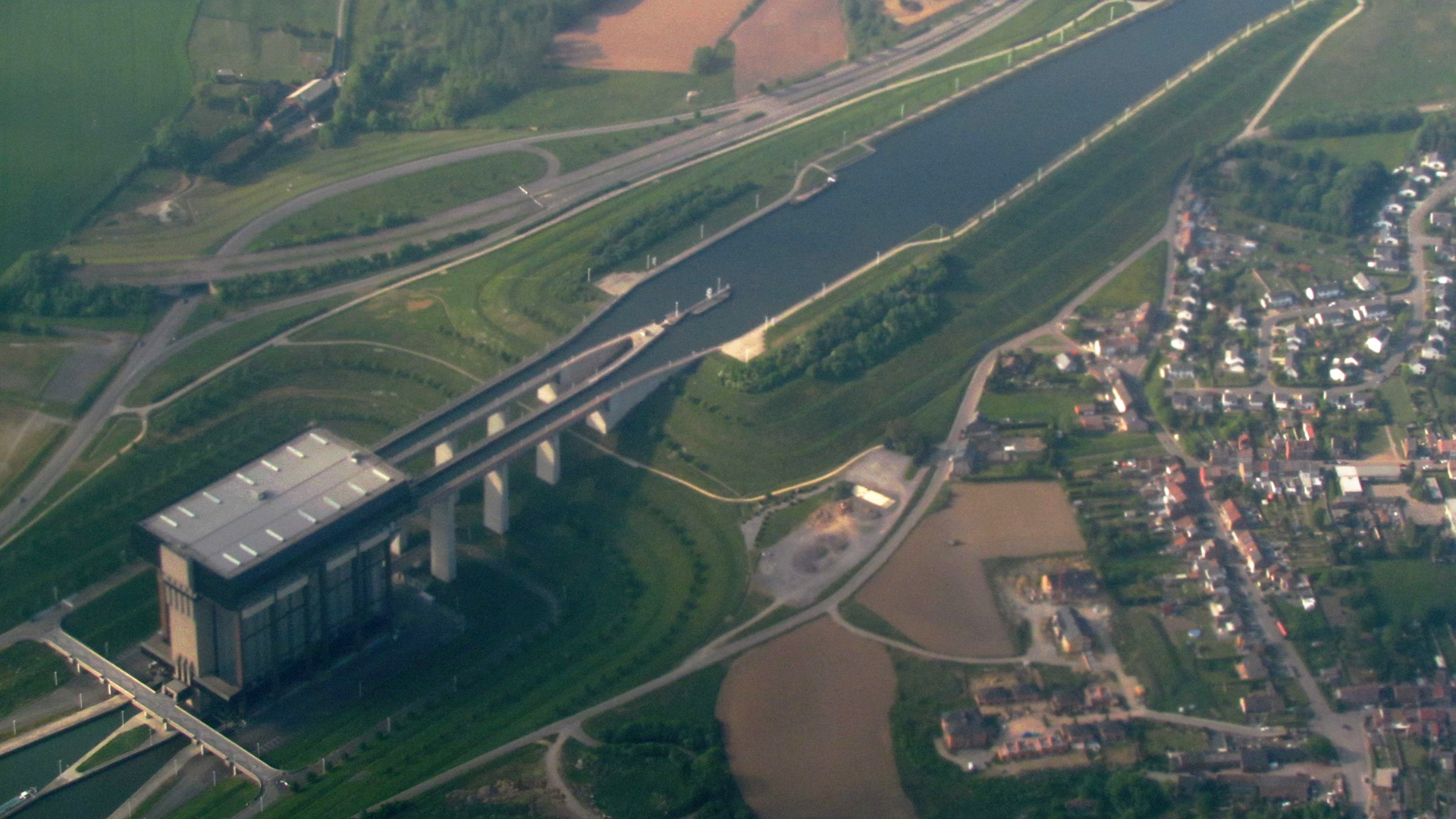
An emblematic site
The bridge is located between two communes: Strépy-Bracquegnies and Thieu. Strépy-Bracquegnies merged with the other ten communes to form the larger commune of La Louvière in 1977, while Thieu is part of the town of Le Rœulx. Strépy-Thieu is therefore not shown on the maps. The locality indicated in the address is Thieu.
